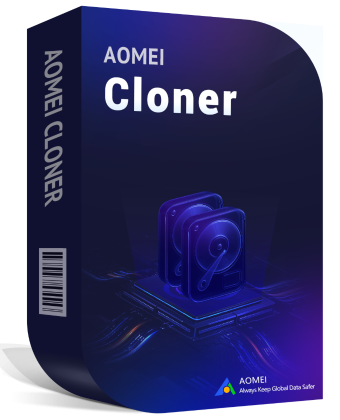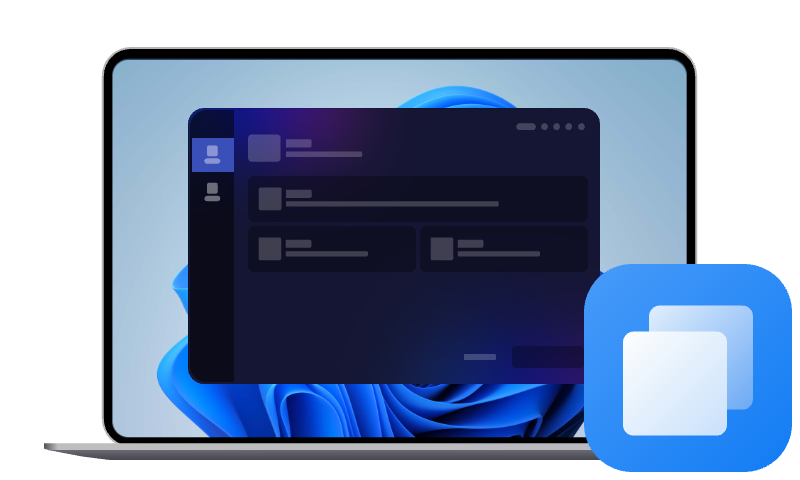Disk Unknown Not Initialized: Quick Fixes + Bonus Tips
Struggling with the disk unknown not initialized error? This guide explains why it happens and how to fix it safely whether it's a new hard drive, an external USB, or an old internal disk.
2 Scenarios of disk unknown not initialized
Disk Management shows Unknown Not Initialized when you plug in a hard drive internally or externally? Don’t panic—this issue is more common than you might think, and in many cases, it’s completely fixable. Generally, there are 2 scenarios of this issue:
Case 1: Disk unknown not initialized no size
If you find disk 1 not initialized with no size, it can be caused by:
👉Connection Issues or Power Failure: If the disk is not properly connected to your computer or isn’t receiving enough power, it may show up as unknown or not initialized.
👉Outdated or Missing Drivers: Without the right drivers, Windows cannot communicate with the hardware properly.
Case 2: Disk unknown not initialized unallocated
If you find disk 1 not initialized unallocated, it can be caused by:
👉Corrupted or Missing Partition Table: A damaged MBR or GPT can prevent Windows from recognizing the drive structure. This corruption can occur due to unsafe ejection, virus attacks, or software conflicts.
👉File System Errors: A damaged or unsupported file system (like ext4 from Linux) can lead to the disk appearing as unknown.
To prevent data loss caused by various disk errors, it is suggested that you copy your hard drive to another drive with a professional disk clone tool.
How to fix disk unknown not initialized in Windows 11/10
Here I’ll show you how to fix disk unknown not initialized under two cases separately:
Case 1: Disk unknown not initialized no size
The solutions mentioned in this part won’t cause data loss, so feel free to try them.
Fix 1: Reconnect your disk
1. If the drive is external, use the Safely Remove Hardware option in Windows before unplugging it.
2. Disconnect the USB or SATA cable from both the disk and the PC. Check for visible damage on the cable or port.
3. Reconnect to a different port or computer.
- Try plugging the disk into a different USB port.
- If you're using a desktop, connect the internal drive to another SATA port on the motherboard.
- Test the disk on another computer to see if it’s recognized there.
4. After reconnecting, restart your system and open Disk Management to check if the drive status has changed.
Fix 2: Update drivers for your disk
1. Press Win + X and select Device Manager from the menu.
2. Expand the Disk Drives section. Look for any drives with a yellow warning icon or names like "Unknown device" or "Not initialized."
3. Right-click the problematic disk and select Update driver.
4. Choose Search automatically for drivers. Windows will look for the latest version online and install it if available.
5. After updating, reboot your PC and check if the disk now appears normally in Disk Management.
Case 2: Disk unknown not initialized unallocated
The solutions mentioned in this part can cause data loss, so before you start, please try data recovery software to recover your data to another place first.
Fix 1: Initialize disk via Disk Management
1. Press Win + X and choose Disk Management from the menu.
2. Right-click the uninitialized disk and choose Initialize Disk.
3. A pop-up will appear asking you to select a partition style. Choose MBR or GPT and click OK to proceed.
- MBR (Master Boot Record) – Best for disks under 2TB or older systems.
- GPT (GUID Partition Table) – Recommended for modern systems and disks over 2TB.
4. Windows will initialize the disk and mark it as unallocated. Right-click the unallocated space and choose New Simple Volume.
5. Follow the wizard to assign a drive letter and format it with a file system (NTFS is recommended).
Fix 2: Use DiskPart to reinitialize and format
If Disk Management failed to initialize or format the drive, you can resort to DiskPart.
1. Press Win + S, type cmd, right-click Command Prompt, and select Run as administrator.
2. In the Command Prompt window, type the following commands and press Enter after each line.
- diskpart
- list disk
- select disk 1 (replace 1 with the number of the uninitialized disk)
- clean
- convert gpt (this command will initialize the disk as GPT; for MBR disk, type convert mbr)
- create partition primary
- assign letter=G (use a different drive letter as per your need)
- format fs=ntfs quick (use a different file system as per your need)
- exit
Now, your disk should appear in File Explorer as a usable drive with a letter assigned.
Bonus tips to prevent disk issues in the future
Dealing with the disk unknown not initialized error can be frustrating—especially if it results in data loss. To avoid facing similar problems in the future, it’s essential to build smart habits around disk usage. Here are some expert-recommended tips to keep your drives healthy and your data safe:
1. Always Eject External Drives Safely
Unplugging a drive without using the “Safely Remove Hardware” feature can corrupt the file system or partition table.
2. Monitor Disk Health
Use tools like CrystalDiskInfo or Hard Disk Sentinel to check your drive’s SMART data and temperature. Early detection of bad sectors or performance degradation can help you replace the disk before it fails.
3. Backup Your Data Regularly
Even the healthiest drive can fail without warning. It is suggested that you copy your hard drive to another drive as a backup. The best free disk clone software – AOMEI Cloner Free can give you a hand.

- Disk Clone – Copy an entire hard drive to another (including all data).
- Partition Clone – Clone only specific partitions instead of the whole disk.
- SSD Optimization – Automatically aligns partitions for SSDs to boost performance and extend lifespan.
- Bootable Media Builder – Create a WinPE bootable USB to clone disks even if Windows fails to boot.
Download AOMEI Cloner now to try it out! To copy one disk to another, just click Clone > Disk Clone and follow the wizard to complete the process.
💡 Note: If you’d like to backup individual files instead of the whole disk, try free backup software AOMEI Backupper.
Conclusion
The disk unknown not initialized error can be alarming, especially when it prevents access to important files. Luckily, the problem can be resolved with the right troubleshooting steps—whether it’s as simple as reconnecting the drive or using advanced tools like DiskPart.
Once you’ve fixed the issue, remember to build good habits to avoid similar problems in the future. AOMEI Cloner can help you copy data from one hard drive to another as a backup. Don’t hesitate to download it and use it to protect your drives!

